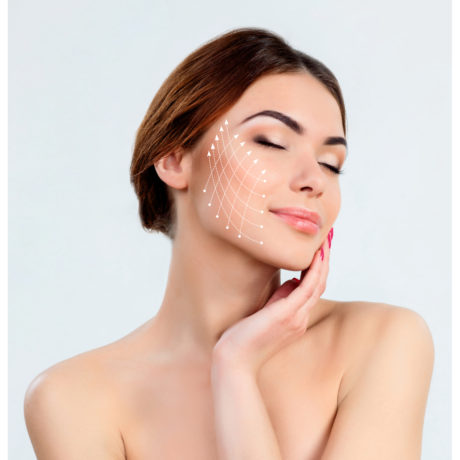What are fillers?
Hyaluronic acid (HA) is a common base for facial fillers that can smooth bothersome lines and folds, temporarily restoring more youthful-looking skin. Hyaluronic acid is produced naturally in the body, so when it is injected beneath the epidermis (into the dermal layer), it is safely, seamlessly absorbed into the body over time. Each of these fillers can address the depressed, sunken and lined sections of the face, as well as add contour and volume to the mid-face and lips.
Areas best suited for fillers include:
- Area bordering the eyes (under the eye hollows, crow’s feet)
- Browline (furrows and vertical lines)
- Around the mouth (nasolabial folds, lip lines or smoker’s lines, and Marionette lines)
- Nose (bunny lines)
- Forehead (horizontal lines)
- Temples (hollow depressions)
- Jawline (enhancing contours)
- Cheeks or mid-face (improve volume loss)
- Lips
Contact us today to schedule a consultation.


The facial fillers we use at Senza Aesthetic Medical are:
- Juvederm – a subtle HA-based filler that focuses on plumping lips, reducing wrinkles around the mouth and improving cheek depressions that tend to make us look older.
- Restylane – another temporary filler that allows you to experiment with facial contours by lifting the cheeks and adjusting the setting of the face. There are multiple Restylane products available to address a wide range of facial aging concerns.
- Perlane – an HA filler that is dynamic and can address all of the areas listed above. This filler is one of the primary set from Restylane focusing on cheek volume and perioral hollows. We also use this filler to add volume to the lips and soften lip borders.
- Radiesse – a semi-permanent filler for areas including the chin, jowls and drooping features. Radiesse can also be used to plump up aging hands, and is currently the only FDA-approved filler for that purpose.
- Cosmoplast – a collagen-based filler that lasts up to six months and works to fill and restore lost collagen volume.
Fillers FAQ's
How many injections will I need?
Most dermal fillers only require injections once or twice a year. The number of injections within each session will depend on the areas you want to be improved and to what degree the skin is aging. There may be several injection points needed to fill in the skin and see long-lasting improvements.
How long will facial fillers last?
Depending on the particular filler used, these fillers can last from six months up to two years. Most of the cheek fillers last upward of 18 months or more.
How much recovery time is needed after treatment?
Fillers do not require recovery time after injection. You may feel a bit sore or experience light bruising, but you can resume regular activity after the quick injection session.
Are there any side effects associated with fillers?
While hyaluronic acid fillers do not usually present side effects, there may be some swelling and tenderness in the skin after injection. Redness and inflammation have rarely occurred with our collagen-based and semi-permanent fillers, but will vary based on your skin type and condition.
Are fillers painful?
The injection itself isn’t painful because we provide a topical anesthetic, and most filler formulas contain lidocaine to soften injection pain.
Can I resume exercise after dermal filler injections?
While there is no designated recovery time after filler injections, Dr. Rasi recommends that you wait for a full day before exercising. The reason for this is that metabolic activity and sweating can reduce the effects of the filler. This may not be an issue for every patient, so Dr. Rasi will let you know if you should avoid intense exercise for a period.
Can fillers be combined with other treatments?
Injectable fillers may be used as a stand-alone solution for wrinkles and volume loss, or as a paired enhancement along with other nonsurgical skin treatments such as Botox and Dysport or laser resurfacing treatments.
© 2025 Senza Aesthetic Medicine | Digital Marketing By Incredible Marketing
